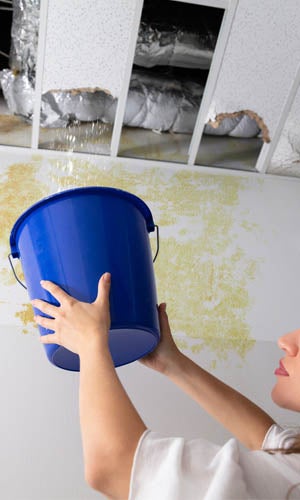Guide To Water Leak Detection At Home
Guide To Water Leak Detection At Home
Blog Article
We've come across this great article relating to Leaking water lines listed below on the internet and thought it made perfect sense to relate it with you here.

The minute you locate a leak, calling your plumber for repair services is the best option. However, some small water leakages may not be visible. Below are some hacks that assist if you can not find it with your naked eyes.
Early detection of dripping water lines can minimize a possible calamity. In addition to saving you cash, it will reduce the worry and also disappointment.
Examine Water Consumption
If you identify abrupt changes, regardless of your usage being the exact same, it indicates that you have leaks in your plumbing system. A sudden spike in your costs suggests a fast-moving leak.
At the same time, a constant rise on a monthly basis, even with the same practices, reveals you have a sluggish leak that's additionally slowly intensifying. Call a plumber to thoroughly check your building, specifically if you feel a cozy location on your floor with piping underneath.
Evaluate and Assess the Scenario
Homeowners must make it a practice to inspect under the sink counters and also even inside cabinets for any type of bad odor or mold development. These 2 red flags indicate a leakage so punctual focus is required. Doing routine evaluations, even bi-annually, can conserve you from a significant issue.
Analyze the Water Meter
Every residence has a water meter. Checking it is a proven manner in which aids you uncover leaks. For starters, shut off all the water resources. Make sure no one will purge, utilize the faucet, shower, run the washing equipment or dishwasher. From there, most likely to the meter and also watch if it will alter. Considering that no one is utilizing it, there must be no activities. If it relocates, that suggests a fast-moving leakage. Furthermore, if you discover no changes, wait a hr or more as well as check back again. This suggests you might have a sluggish leakage that could also be below ground.
Asses Exterior Lines
Do not fail to remember to examine your outside water lines as well. Should water leak out of the link, you have a loose rubber gasket. One little leak can waste bunches of water and surge your water costs.
Do a Food Coloring Examination
30% comes from commodes when it comes to water intake. Examination to see if they are running appropriately. Decrease specks of food color in the storage tank as well as wait 10 mins. There's a leakage in between the tank and dish if the color somehow infiltrates your bowl throughout that time without flushing.
Inspect for discolorations as well as damaging as the majority of home appliances and pipes have a life span. If you believe dripping water lines in your plumbing system, do not wait for it to rise.
The minute you find a leak, calling your plumber for repair services is the finest remedy. Some tiny water leaks may not be noticeable. Checking it is a proven means that helps you discover leaks. One little leakage can throw away lots of water and increase your water expense.
If you suspect leaking water lines in your plumbing system, don't wait for it to rise.
WARNING SIGNS OF WATER LEAKAGE BEHIND THE WALL
PERSISTENT MUSTY ODORS
As water slowly drips from a leaky pipe inside the wall, flooring and sheetrock stay damp and develop an odor similar to wet cardboard. It generates a musty smell that can help you find hidden leaks.
MOLD IN UNUSUAL AREAS
Mold usually grows in wet areas like kitchens, baths and laundry rooms. If you spot the stuff on walls or baseboards in other rooms of the house, it’s a good indicator of undetected water leaks.
STAINS THAT GROW
When mold thrives around a leaky pipe, it sometimes takes hold on the inside surface of the affected wall. A growing stain on otherwise clean sheetrock is often your sign of a hidden plumbing problem.
PEELING OR BUBBLING WALLPAPER / PAINT
This clue is easy to miss in rooms that don’t get much use. When you see wallpaper separating along seams or paint bubbling or flaking off the wall, blame sheetrock that stays wet because of an undetected leak.
BUCKLED CEILINGS AND STAINED FLOORS
If ceilings or floors in bathrooms, kitchens or laundry areas develop structural problems, don’t rule out constant damp inside the walls. Wet sheetrock can affect adjacent framing, flooring and ceilings.
https://www.servicemasterbyzaba.com/blog/how-to-detect-water-leakage-in-walls/

As a serious reader about Locating water leaks, I imagined sharing that topic was really useful. Sharing is caring. Helping others is fun. Many thanks for taking the time to read it.
Report this page